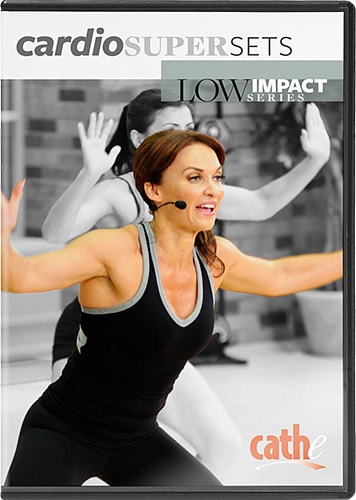 You want to get the most out of your workout, and one of the best ways to do that is to focus in on compound and combo exercises as we do in many of the workouts in my new Low Impact Series. Compound exercises are strength exercises where you work more than one muscle group at a time as opposed to isolation exercises that only work a single muscle group. Examples of compound exercises are pushups, pull-ups, bent-over row, deadlifts, and squats.
You want to get the most out of your workout, and one of the best ways to do that is to focus in on compound and combo exercises as we do in many of the workouts in my new Low Impact Series. Compound exercises are strength exercises where you work more than one muscle group at a time as opposed to isolation exercises that only work a single muscle group. Examples of compound exercises are pushups, pull-ups, bent-over row, deadlifts, and squats.
Bicep curls, triceps extensions and leg extension are isolation exercises since they only work one muscle group. A combo exercise is when you combine at least two different exercises into one continuous movement like a squat into a dumbbell military press. What are the advantages of doing compound and combo exercises?
Compound and Combo Exercises Burn More Calories
When you work more than one muscle group at a time, you get more of a calorie burn than when you isolate a single muscle group. If your goal is to build muscle definition and burn away stubborn layers of fat, compound and combo exercises will help you do it. When you activate lower body muscles, you burn more overall calories because you’re working larger muscles.
There’s another calorie-burning benefit of doing compound and combo exercises. You activate more fat-burning hormones such as growth hormone and testosterone. These help you continue to burn fat even after your workout is over. This so-called afterburn effect keeps your metabolism elevated for hours after you leave the gym. Compound and combo exercises place more metabolic demands on your body than isolation movements do.
Compound and combo Exercises Save Time
If you don’t have time for hours of working out, compound and combo exercises will get you in and out faster and still give great results. You don’t have to train as long to activate all of your muscles when you’re working more than one muscle group at a time. You get the same results in half the time it would take to isolate individual muscle groups.
They Elevate Your Heart Rate More
You get more of a cardiovascular workout when you do compound and combo exercises since these exercises elevate your heart rate more. When you work multiple muscle groups simultaneously your heart works harder, especially if you’re working lower body muscles. If you do compound or combo exercises with little rest between sets, you’ll get a cardiovascular workout too.
They’re Functional Movements
Compound and combo exercises use movements you make in everyday life. Bent-over rows mimic the mechanics of bending over to pick up an object like a heavy box or a child. Most movements you do involve multiple joints and muscles. It makes sense to train that way. Compound and combo exercises combine strength and functional training to maximize benefits.
They Build Greater Strength
Compound and combo exercises like we use in the Low Impact Series are superior to isolation exercises for building strength and burning fat. You’ll be able to lift more weight with each set because you’re recruiting multiple muscle groups. This means faster strength-building. Combine this with the greater hormonal activation, and you can see why compound exercises are gaining favor again.
Take Advantage of the Benefits of Compound and combo Exercises
There’s still a place for isolation exercises, but you’ll save time and get a more effective workout if you add more compound movements to your routine. Even if you can’t make it to the gym or are away from your home exercise room, you can use your own body weight to work multiple muscle groups doing pushups and pull-ups. Make compound and combo exercises a part of your workout and try some of my workouts like Cardio Supersets or AfterBurn which are packed with compound and combo exercises.
Related Articles By Cathe:
5 Reasons You Should Do More Compound Exercises
4 Hardest Strength-Training Exercises
Do You Need to Do Isolation Exercises?
Strength Training: Are You Focusing Too Much on Isolation Exercises?
The Best Ways to Build Muscle Endurance & Why You Should
6 Ways to Burn More Calories When You Weight Train
Front vs Back Lunges: What Are the Advantages of Each?
Strength Training: Avoid These 5 Mistakes When Lifting Heavy

